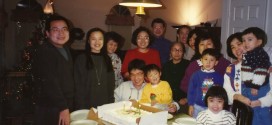This article was first published by New America Media on November 11, 2013
SAN FRANCISCO – Eunice Kim has spent the past three years working as medical interpreter in San Francisco, where she helps Korean patients communicate with their doctors. More than once she’s found herself involved in discussions around key medical decisions for her clients.
And no discussion is more difficult, she said, than when it concerns end-of-life care.
“Most of the patients I’ve worked with have tended not to make decisions for themselves,” said Kim. That’s partly to do with language barriers, she explained. Many of Kim’s clients are seniors with limited English skills. But it’s also tied to a general reluctance to speak directly of one’s own or a relative’s mortality.
In one instance, Kim recalls, an elderly Korean woman was asked to fill out an Advance Care Directive form – detailing what kinds of life-sustaining treatments she would or would not like administered in cases where patients are unable to communicate their wishes.
The patient’s daughter took Kim aside and explained she was uncomfortable asking her mother the questions on the form.
“She didn’t want to talk with her mother about her death,” Kim said, adding, “she felt like [talking about it] would somehow make it a reality.”
What is Palliative Care?
According to V.J. Periyakoil, MD, director of palliative care education and training at the Stanford School of Medicine, “Palliative care is for any patient diagnosed with a serious illness, like cancer or heart disease.”
More than hospice, a part of palliative care that is restricted only to comfort care for those with six months or less to live, palliative medicine aims to relieve a patient’s pain and symptoms “irrespective of how long they have to live,” Periyakoil said, and can include medical treatment when appropriate.
Patients, she added, can “benefit from palliative care for many years before the end of life.”
Periyakoil recalled one patient who had less than six months to live. But with palliative treatment, he ultimately lived more than six years. In that time he established a college fund for his grandchildren, got remarried and in the end died peacefully.
Still, despite the obvious benefits, she noted, the fear of talking openly about death prevents patients and their families from exploring their options when it comes to palliative treatment.
Periyakoil gave the example of a Korean American patient she had once treated who was in the last stages of a brain tumor. By the time he arrived at the clinic, he was already near the end. While working with the man’s family, she found that although they knew of his cancer, they never used the word. And neither did Periyakoil, who has developed a Web-based program on caring for multi-cultural older adults.
“Older Korean Americans and immigrants who are less acculturated,” said Periyakoil, “need to be educated gently and respectfully about palliative care.”
‘Even Doctors’ Confuse Hospice and Palliative Care

Jung Kwak teaches social welfare at the University of Wisconsin-Milwaukee. A fellow of the Gerontological Society of America, she has long studied Korean American attitudes regarding death and dying.
Kwak said there are many different factors that can influence an individual’s attitude regarding end-of-life care, regardless of their ethnic background. For Korean Americans, she said, those can range from a person’s socioeconomic status or religious affiliation to the how much he or or she has acculturated with mainstream American culture.
Individuals with lower-incomes who are less connected to mainstream culture, for example, often tend to be “less open to discussing end-of-life care issues in advance,” she said.
Kwak added, however, that patients who have had previous experience with end-of-life care, for themselves or a loved one, tend to be more proactive in seeking it out.
But even for those open to discussing end-of-life options, the availability of services can pose another obstacle.
Gary Lee, MD, explained, “Many patients have unrecognized needs for pain and symptom management, or emotional, social and spiritual support. Lee, chief of palliative medicine at Santa Clara Valley Medical Center in San Jose, continued, “A palliative care assessment can create awareness of these needs and can improve the patients’ and families’ quality of life.”
Still, he acknowledged that getting an assessment can be tough, considering that more than half the hospitals in California do not have palliative care programs, while many doctors still see palliative treatment as akin to hospice.
“Unfortunately, most patients don’t receive early palliative care. The barriers to this include misconceptions on the part of both patients and physicians that palliative care is only for patients at the very end of life and that palliative care is synonymous with hospice,” said Lee. “There are also not enough palliative care specialists to provide all the services that could be provided.”
Undue Suffering
Hospice Care of California in Orange County is one of the state’s few end-of-life treatment centers catering to Korean Americans. The center, founded in 2010, employs four Korean-speaking staff full time, including a Korean-speaking doctor as well as a nurse, hospice care expert and social worker.
Ellen Kim, the center’s social worker, said many Koreans “don’t want to say they have cancer, or don’t want to admit their relatives or parents are in hospice care.” Moreover, a majority of decisions regarding treatment and the like are “made by the families and not by the patients themselves.”
Often families make those decisions without consideration of the patient’s comfort.
“I’ve seen a lot of patients who have endured undue suffering because families will often insist that life-sustaining care be prolonged,” said Kim, “which can often prolong the pain and suffering for the patient.”
Kim agrees that many Koreans still lack an understanding of hospice and palliative care. Many still assume hospice is another way of speeding death. Although hospice and palliative care tries to ease the pain of the patient, many see it as giving up.
Nationally Asians are dramatically underrepresented in receiving end-of -life care. A survey in 2011 by the National Hospice and Palliative Care Organization [www.nhpco.org/ ] shows that of the 1.6 million patients who received some form of palliative treatment that year just over two percent were Asian.
“The Korean American community could benefit from a more open discussion about end-of-life issues. More knowledge would mean being better prepared for end-of-life decision making,” Kwak stressed. She said such dialogue can also help individuals and communities better evaluate their priorities and values in life.
“I think end-of-life care topics can be very important from a spiritual and religious perspective,” she went on. “This is not just about what treatments to choose, but also reflects the core values and beliefs of a person.”
Kwak often reminds her students that discussions around death and dying are really about “living and life.”
Aruna Lee wrote this report for the Korea Times through a California Healthcare Foundation Journalism Fellowship, a project of New America Media in collaboration with the Stanford In-reach for Successful Aging through Education Program.
 Asian Fortune Your source for all things Asian American
Asian Fortune Your source for all things Asian American



